WhatsApp Flows: How to build conversational journeys that convert
Published on October 24, 2025/Last edited on October 24, 2025/11 min read
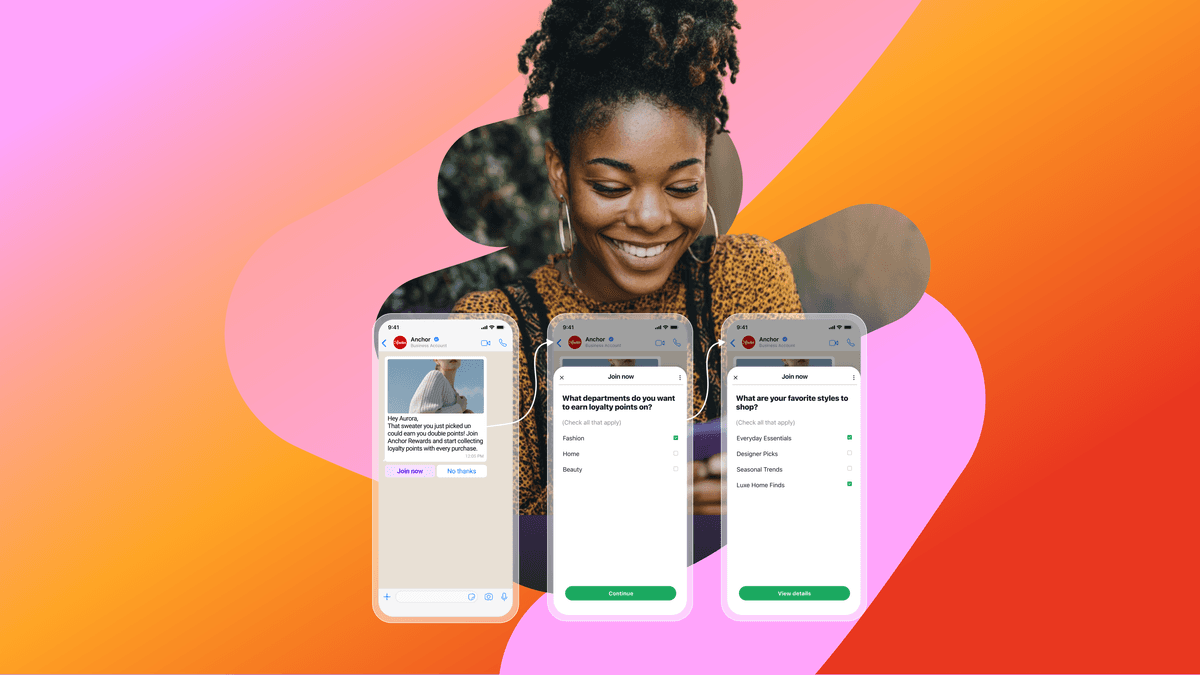
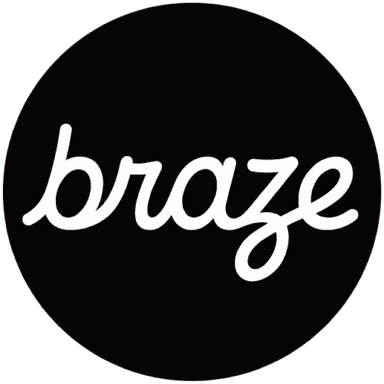
Team Braze
What are WhatsApp Flows?
In today’s fast-paced digital world, consumers expect interactions with the brands they love to be quick, seamless, and convenient. WhatsApp Flows allow marketers to deliver exactly that by creating structured interactions directly within a conversation on theWhatsApp Business Platform. Instead of sending a static message with a link out to a website or app, brands can guide customers through multi-step processes and tasks—all without leaving the chat window.
Think of WhatsApp Flows as customizable, app-like experiences embedded in the world’s most popular messaging app. With more than 3 billion users in over 180 countries, WhatsApp’s reach has real business impact. Whether it’s receiving a personalized offer based on preferences, signing up for a loyalty program, or booking a service, customers can now take meaningful actions in just a few convenient taps.
Top use cases for WhatsApp Flows include:
- Info capture: Gather email addresses, preferences, or sign-ups for newsletters and promotions.
- Bookings: Let customers reserve appointments, consultations, or travel arrangements instantly.
- Promotions: Send personalized offers based on customer selections.
- Feedback: Conduct surveys or net promoter score (NPS) questionnaires in a familiar, low-friction environment.
By reducing the need to switch between apps or websites, WhatsApp Flows lower barriers for customers and reduces drop-off for brands, making it easier for brands to boost conversions.
How WhatsApp Flows work
So how does this feature actually function? WhatsApp Flows can be built in the WhatsApp Manager using the no-code Flows Builder interface or during message template creation—allowing marketers to create multi-step forms in minutes. Instead of requiring heavy developer resources, marketers can pick from pre-built, no-code Flows for popular use cases or create their own unique Flow with simple customization.
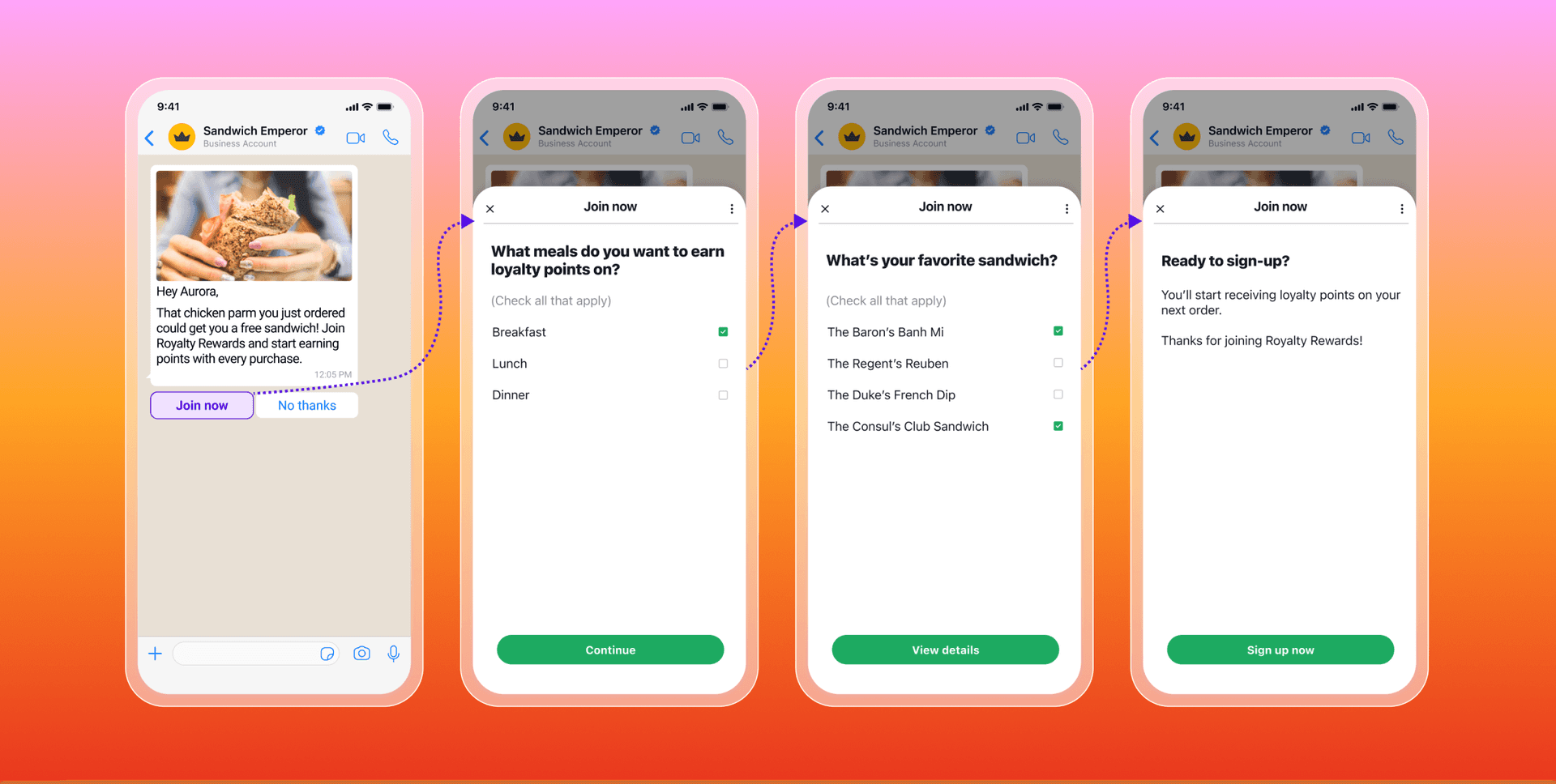
Here are the key building blocks to using WhatsApp Flows within your marketing strategy:
- Build your WhatsApp Flows
- Create multi-step, interactive experiences with no-code or low-code options using the Flows Builder or during message template creation in the WhatsApp Manager.
- Send Flows to customers using a customer engagement platform
- Personalize the experience: Flows can be added to a call-to-action button within a marketing or utility message, for example, behind a “Sign up” or “Book now” CTA. When the customer clicks on the button, they are launched into the Flow. Personalize the marketing and utility message to include information about the customer and make the experience more contextually relevant. For example, personalizing the message based on past purchases, browsing behavior, and more.
- Trigger Flows: Trigger Flows based on your customers’ behaviors, preferences, and cross-channel interactions.
- Real-time actions: For example, if a customer is looking for flights or hotel rooms, automatically trigger a Flow for them to complete a booking.
- Campaign-driven: For instance, push a seasonal promotion with a button that launches an Early Access sign-up flow.
- Store customer data: Information collected in a WhatsApp Flow can be stored as first-party or zero-party data, fueling personalization in WhatsApp campaigns across channels.
Because WhatsApp Flows sit inside the app, they feel natural and conversational. Customers aren’t asked to bounce between channels, which leads to higher completion rates and stronger brand engagement.
Marketing use cases for WhatsApp Flows
One of the biggest strengths of WhatsApp Flows is their versatility. Brands across industries can use them to solve common marketing challenges—whether it’s capturing new leads and customer information, boosting sales, or making customer service more efficient.
Lead generation and info capture
Traditional forms often create friction, especially on mobile. With WhatsApp Flows, brands can collect customer information through convenient, interactive forms directly inside the app. A financial services brand, for example, might ask pre-qualified customers about their income range or loan purpose to generate segmented, high-quality leads instantly. This not only simplifies sign-up, but also provides sales teams with valuable context for follow-ups.
This is also a major opportunity for brands to deepen engagement among their customers with key channels and programs that might support their overall business strategy—for instance, encouraging users to sign up for a loyalty program or for early access to product drops, or to opt in for newsletters or new channels.
eCommerce and retail
For online stores, WhatsApp Flows can replicate the shopping journey inside a chat. A brand can see that a customer is browsing for skincare products, but they don't have enough information to make a recommendation. They can send the customer a Flow to ask about her skin type, environment, formula preferences, and more and then return a spot-on recommendation. This use case is especially powerful because WhatsApp messages often see open rates above 90%—compared to email open rates, which sit around 20%.
Customer service
Customers often use WhatsApp to ask about orders, policies, or troubleshooting. With WhatsApp Flows, it’s possible for brands to connect directly with these users and help resolve their issues—for instance, a brand could reach out to customers who expressed negative sentiment or had a poor purchase experience in order to get more details about what the issue was.
Healthcare organizations are also beginning to explore Flows for patient support. Imagine booking a telehealth appointment, confirming insurance information, or even requesting prescription refills directly within WhatsApp. These interactions feel seamless for patients, simplifying things for them and supporting a better, more pleasant experience.
Loyalty and retention
WhatsApp Flows can also help deepen engagement with existing customers. Imagine a financial services brand using Flows to facilitate the entire debit card sign-up right within WhatsApp, including collecting information on which spending categories the customer wants cash back on. These small, conversational commerce touchpoints encourage repeat business, reduce friction, and build long-term loyalty.
Even in industries like travel and tourism, Flows can create richer experiences. A hotel chain could let guests upgrade their room or add excursions before a trip, while airlines could offer in-chat seat selection and meal preferences—driving ancillary revenue while keeping the booking process simple.
Across all these scenarios, WhatsApp Flows open up opportunities for brands to keep customers engaged—without breaking the conversational context.
Benefits of WhatsApp Flows for brands
Why should marketers invest time in incorporating WhatsApp Flows into their broader strategy? The short answer: Because they drive real business impact. By making customer interactions faster, smoother, and more engaging, Flows help brands drive higher conversions, foster stronger loyalty, and collect more robust zero- and first-party customer data..
Improved conversions and completion rates
Every extra click or redirect risks losing a customer. WhatsApp Flows minimize this friction by allowing customers to complete tasks inside the WhatsApp thread itself—whether that’s discovering the perfect product, signing up, booking a reservation, or providing feedback. The result is higher task completion rates and fewer abandoned interactions. This aligns with WhatsApp’s proven ability to drive results—brands have seen 89% higher purchases per user on the platform compared to other channels, showing just how powerful in-thread interactions can be.
Lower friction, higher satisfaction
For consumers, the value of WhatsApp when it comes to brand interactions is simple—it makes it easier for them to do the things they want to do. Instead of having to jump from a message to a website to an app to complete an action, WhatsApp Flows allows users to take action from a single location via seamless, convenient in-thread interactions, reducing the effort they have to put in to get value out of their brand relationships.
Personalization through data
Each WhatsApp Flow is an opportunity to gather valuable zero- and first-party data. Customers willingly share preferences, feedback, and needs in exchange for convenience. For instance, a beauty brand could ask a new customer about their skin type during onboarding and then deliver highly targeted product recommendations in future campaigns.
The advantage goes beyond immediate personalization. Because WhatsApp Flows are structured, data is captured and stored cleanly—making it easy to build consistent, organized customer profiles. Over time, these profiles help marketers send more relevant messages, refine segmentation, identify emerging patterns, and orchestrate smarter campaigns across every channel. Customers benefit from interactions that feel tailored, while brands gain richer insights for strategy.
In an increasingly AI-native world, this kind of compelling, highly individualized information is essential fuel for the kind of relevant experiences that modern marketing depends upon. That means using this data to power recommendation engines, AI decisioning tools, and other solutions that can support better marketing over time.
WhatsApp Flows vs. traditional messaging
It’s tempting to think of WhatsApp Flows as just another way to send messages, but they represent a real shift in how brands can use the channel. Compared to traditional WhatsApp campaigns, Flows offer more interactivity, personalization, and impact.
Static, one-way campaigns vs. interactive, two-way conversations
Traditional WhatsApp messages are often one-way: A promotion, an alert, or a simple notification. In contrast, a WhatsApp Flow creates an interactive journey where customers can tap, respond, and make choices. For example, instead of a message that says “50% off flights—book now,” a Flow could ask for the customer’s favorite vacation destinations and price range, and then immediately show available options.
Isolated campaigns vs. orchestrated journeys
Standalone WhatsApp campaigns can feel disconnected from other touchpoints. WhatsApp Flows can be orchestrated as part of larger journeys by pairing them with other channels. That means a conversation started in WhatsApp can continue seamlessly via email, SMS, or in-app messaging, reinforcing consistency across digital touchpoints and boosting conversions. Customers will then experience one connected journey rather than an array of fragmented messages.
In other words: WhatsApp Flows take the channel from “message delivery” to interactive journeys, helping brands build stronger, more meaningful relationships with their customers.
How Braze amplifies the impact of WhatsApp Flows
While WhatsApp Flows are powerful on their own, they become even more effective when paired with Braze. With the customer engagement platform’s native WhatsApp support, cross-channel orchestration, and AI-driven personalization, brands can transform Flows from simple automations into strategic growth drivers.
Native WhatsApp integration
Braze offers a native WhatsApp integration, meaning you don’t need separate tools to manage your WhatsApp program, including Flows. You can build WhatsApp Flows in WhatsApp Manager and seamlessly sync them to Braze for use in marketing campaigns and transactional updates. This eliminates silos and helps teams work more efficiently.
Unified customer profiles
Because Braze is built in a channel-agnostic manner, the platform is able to support individual, unified user profiles that update in real time as a given customer engages with messages, signals preferences, and takes actions (like making a purchase). That allows marketers to take advantage of that 360-degree view of the customer, based on structured zero- and first-party data, and use WhatsApp to engage individuals with experiences across touchpoints that are mapped to their behaviors and needs.
Cross-channel orchestration
With Braze Canvas, the platform’s journey orchestration tool, you can incorporate WhatsApp Flows into broader cross-channel experiences . For example, a retail brand could use a Flow to collect loyalty sign-ups in WhatsApp, then automatically follow up with a personalized email welcoming the customer and a push notification when points are earned. This turns WhatsApp into a connected part of your overall engagement strategy, rather than a siloed channel.
BrazeAI™ for optimization
Sending the right message on the right channel matters. With BrazeAI™, brands can optimize who they are targeting WhatsApp Flows to by sending Flows to customers who prefer engaging over WhatsApp. AI-powered product recommendations can also be layered into Flows, ensuring that every recommendation feels spot-on. For example, a media brand could use Flows to ask a customer who frequently engages on WhatsApp about their viewing preferences and favorite genres, making it possible to recommend the perfect show to binge next.
Final thoughts: Create WhatsApp conversations that convert
Consumers today expect fast, convenient, and personalized interactions—and WhatsApp Flows deliver exactly that. From lead and info capture, personalized offers, and surveys to lead generation and service booking, Flows give brands a way to turn everyday conversations into high-value engagement.
What sets the best experiences apart, though, is personalization and cross-channel orchestration. With Braze, you can go beyond basic Flows and create relevant cross-channel journeys that connect WhatsApp to email, push, in-app, and more. Add in the power of BrazeAI™ for personalization and optimization, and WhatsApp Flows become a powerful tool for driving conversions, loyalty, and long-term revenue.
Learn how WhatsApp Flows keep customers engaged, satisfied, and coming back for more.
FAQs
What are WhatsApp Flows?
WhatsApp Flows help brands increase conversions and boost retention by facilitating convenient, seamless interactions with their customers using versatile, customizable forms. With this feature, marketers can easily collect sign-ups, conduct surveys, recommend products, help customers book services, capture leads, and more—directly within a WhatsApp conversation.
How are Flows different from chatbots?
Chatbots converse and often use natural language processing to do so; Flows help customers complete tasks through structured, pre-defined journeys set up by a marketer.
What KPIs should I track?
Flow starts/completions, step drop-offs, time-to-complete, downstream conversion (purchase, booking), CSAT/NPS for support Flows.
How do I drive opt-ins?
Flows do not require an additional opt-in; however, users do need to opt in to receive messaging from brands using WhatsApp in order to receive Flows. To drive WhatsApp opt-ins, consider using click-to-WhatsApp ads, website widgets, email banners, QR codes, and post-purchase prompts.
Related Tags
Be Absolutely Engaging.™
Sign up for regular updates from Braze.
Related Content
View the Blog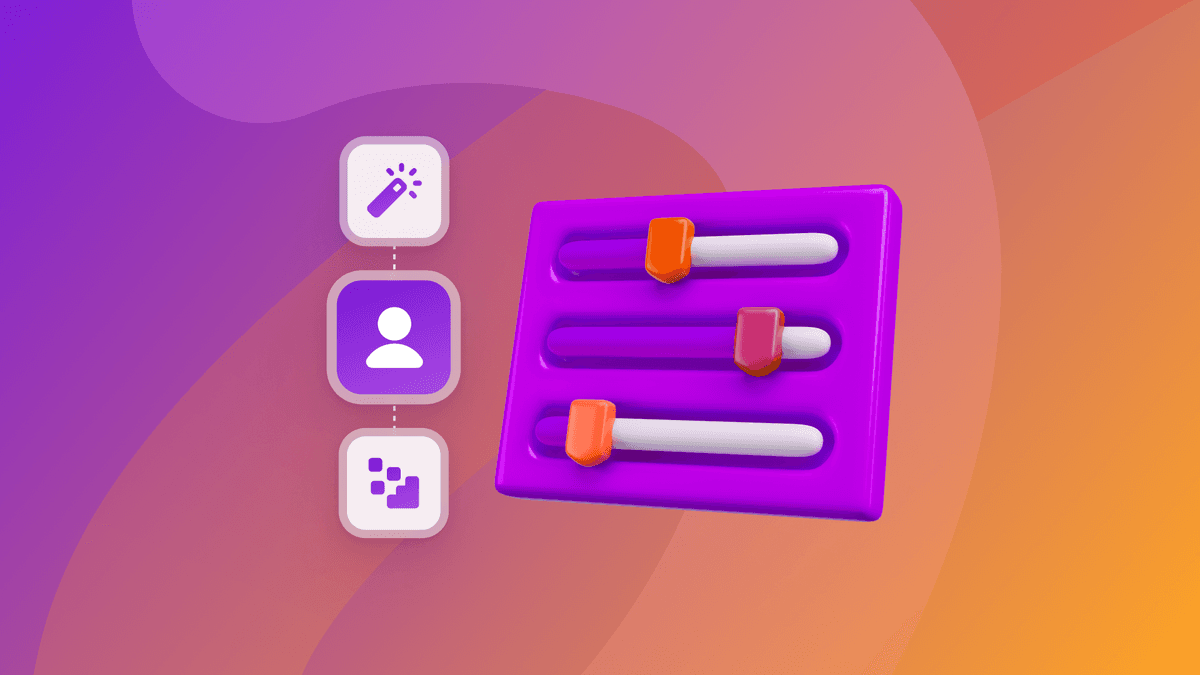
How behavioral marketing turns data into personalized experiences

Team Braze

How Braze supports exceptional customer engagement during Black Friday, Cyber Monday, and beyond

Todd Grennan
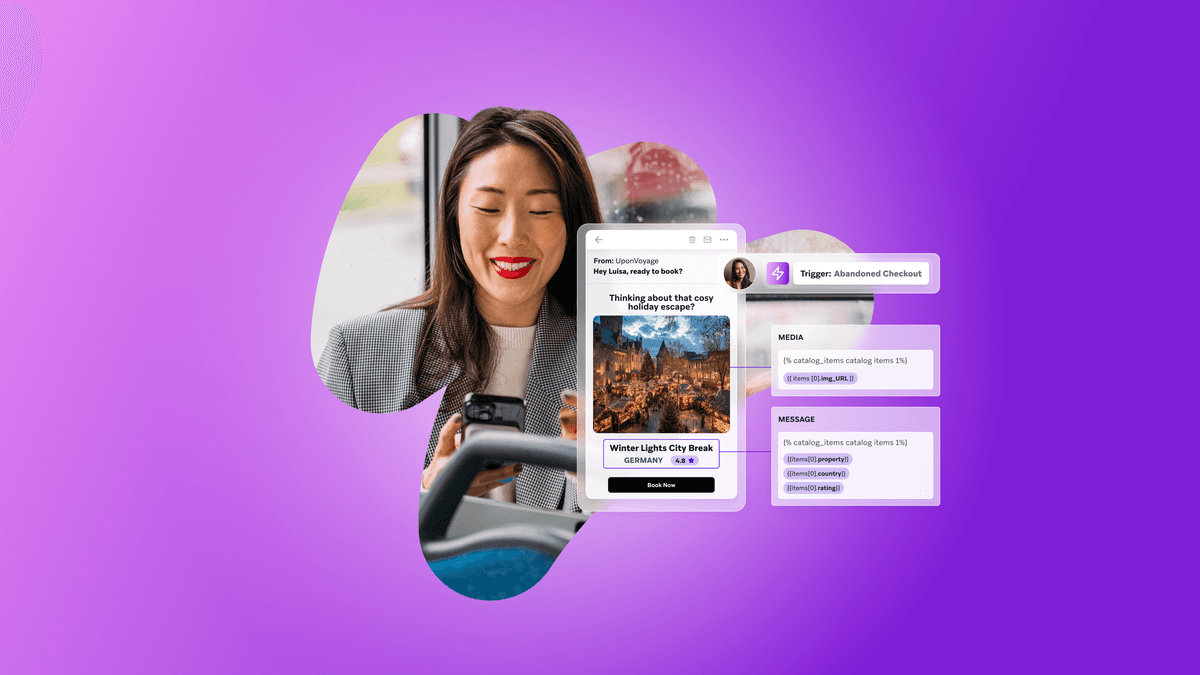
How to overcome messaging fatigue this holiday season
